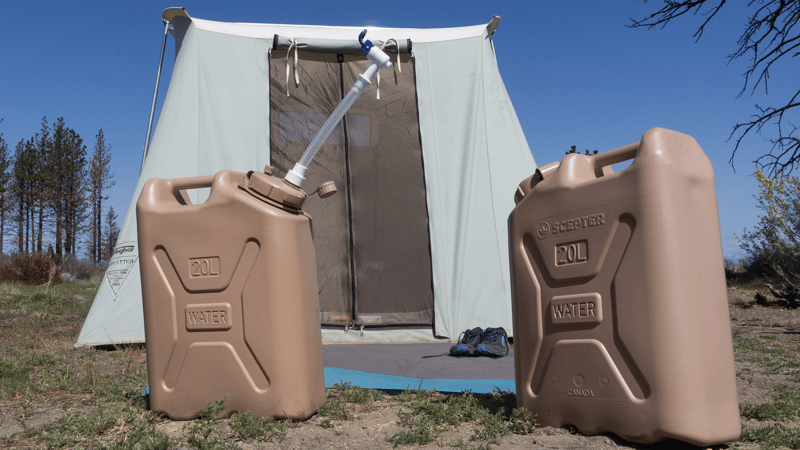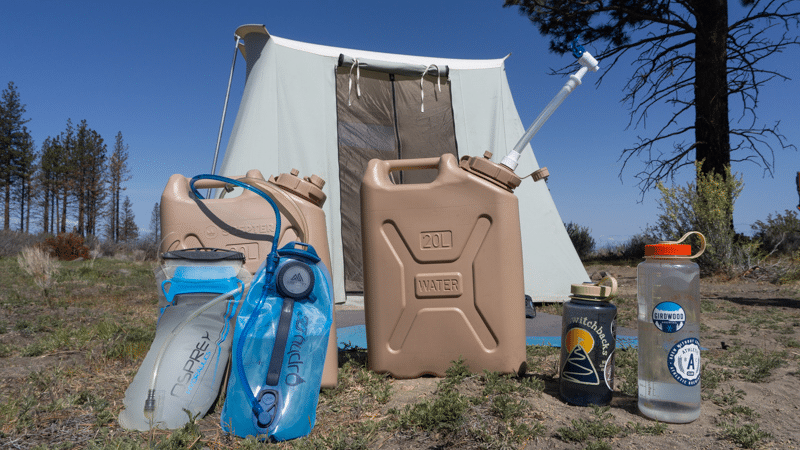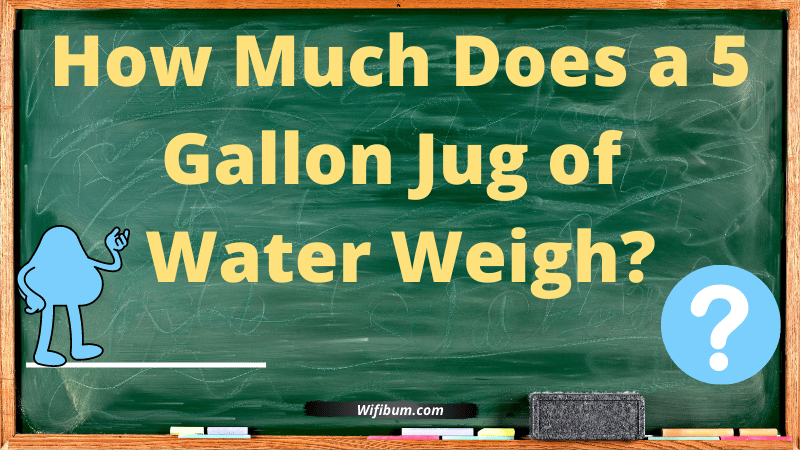How much water should I bring camping? It’s a question I ask myself each camping trip.
I’ve spent a lot of time camping in the backcountry and desert environments, and it’s clear that many people grossly underestimate how much water they need when camping.
How much water you should bring camping will depend on many factors. I’ll start by giving a general rule and then go into the nuances of when you need to increase or decrease the amount of water you bring camping.
How Much Water Should I Bring Camping?
In general, it is recommended to bring 2 gallons of water per person, per day.
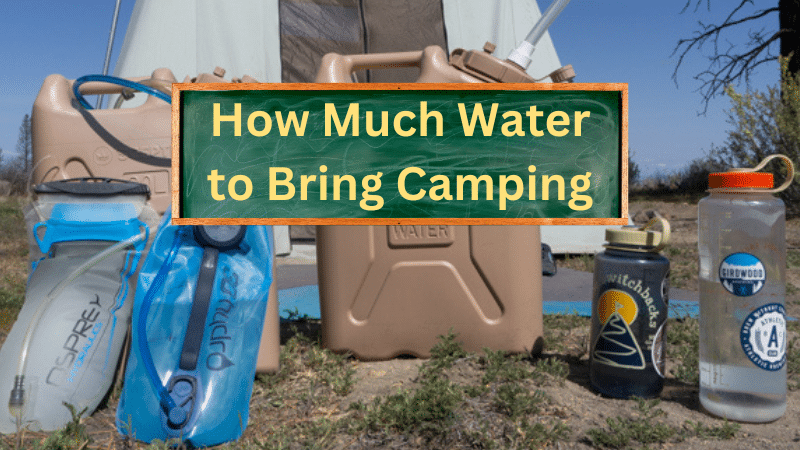
Before writing this article, my rule of thumb was 1.5 gallons of water per day and sometimes only 1 gallon per day on longer trips.
Most sources that recommend 2 gallons per day do not show how this hypothetical person plans on consuming these 2 gallons of water. So, I figured I would dive in.
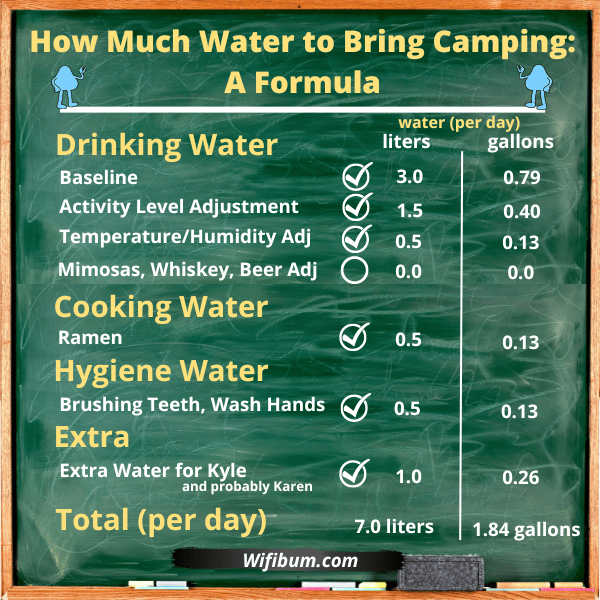
This article aims to provide a solid and somewhat logical thought process to answer this question. This is not medical or any other advice, water is important, and you have to be responsible for yourself and those relying on you.
I’m going to discuss (click to jump to the section):
- Camping water consumption,
- When to increase or decrease the amount of water to bring
- Show a step-by-step formula for your next trip.
- Why bringing too much water can be bad
- Tips on how to bring less water
If you read this entire article, you should be able to have a more educated idea about how much water to bring on your next trip.
Note: this article is written primarily for people camping off the grid with no access to running water during the trip. It also assumes you don’t have a water filter and won’t filter water on day hikes for drinking.
In this article, I’m going to write in both liters and gallons. Many water containers and bladders are measured in liters, but many in the U.S. buy their water in gallons (ie: when we fill them up at a grocery store, we pay in gallons).
Why Water is Important while Camping
We all know water is important when camping.
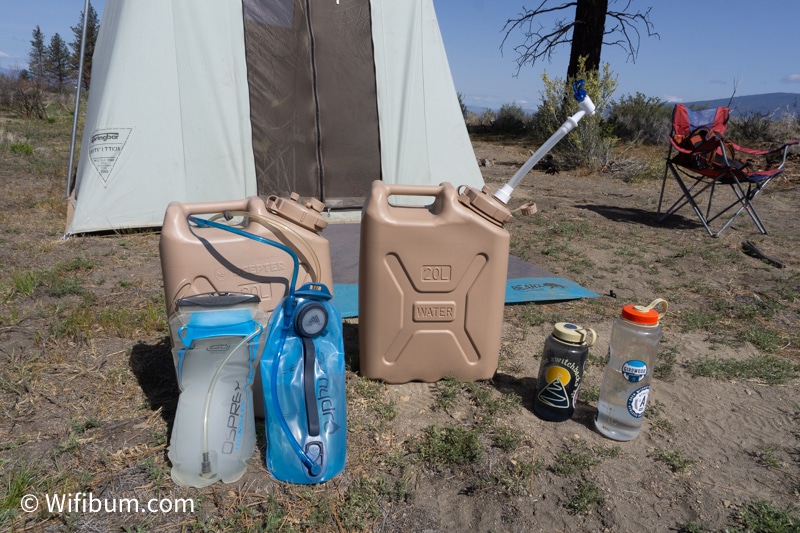
From personal experience, having to ration drinking water on a camping trip is the easiest way to ruin a trip AND the easiest way to make questionable decisions.
If you’ve been on enough group trips, you’ll definitely recall occasions where you or someone in your group only had a liter or 2 on the final day and was trying to make it work.
This is fine if you’re about to head back home or pass through town – but if that’s not on the agenda, it’s easy to “try and make it work” which can result in a person becoming dehydrated.
Dehydration is an issue that can escalate quickly and turn into an emergency.
And if it doesn’t result in an emergency, it’s still not fun feeling thirsty all day.
It’s also an issue that can be easily avoided by proper planning. So, let’s plan.
Determining Camping Water Usage: 4 Categories
To accurately determine how much water to bring camping, you need to understand how you’ll consume your camping water. I like to think of these 4 categories:
1. How Much Water for Drinking while Camping? A Starting Point.
There are many variables that will result in an optimal amount of water to drink on any given day.
To better understand, let’s look at the baseline guidance provided by the U.S. National Academies of Sciences, Engineering, and Medicine (source link). In a later section, we’ll talk about increasing the amount of water from this baseline.
Note: the source talks about this in “fluid” rather than water, so since drinks like coffee, sports drinks, etc are mostly water, they count toward the totals regardless if the source is deemed natural or healthy or whatnot.
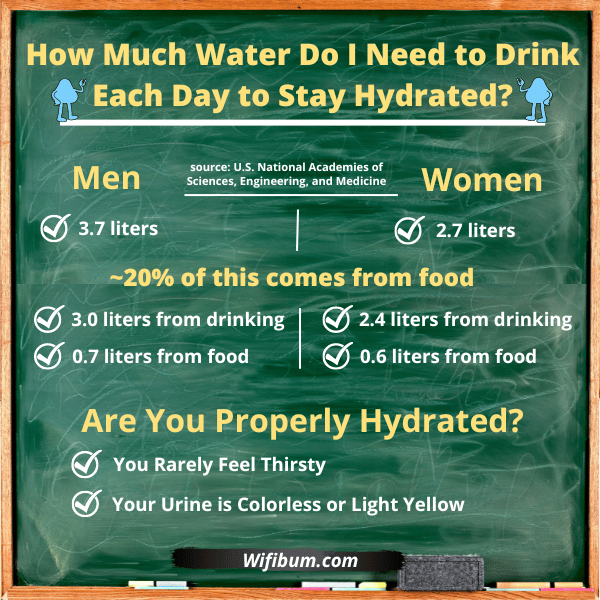
Obviously, these are super generic guidelines. I would think it would be better to do it based on size or something, but who knows?
What we can gather is, regardless of gender, the range for fluid intake for an adult is about 2.7 liters to 3.7 liters of water per day as a baseline.
Personally, I think I only drink 2 liters on days when I don’t exercise. I probably drink 3 liters on days I do. Ms. Wifibum drinks about 1 liter per day plus coffee.
Either way, I needed a starting point that had some logic behind it, so there it is.
Rule of Thumb Drinking Water: You will want at least 2-3 liters of water to drink per person per day. I will discuss increasing this number based on a few factors later in the article.
2. How Much Water for Hygiene on a Camping Trip?
My rule of thumb is to bring 0.5 liters of water per person per day.
It is important to have drinking quality water for hygiene.
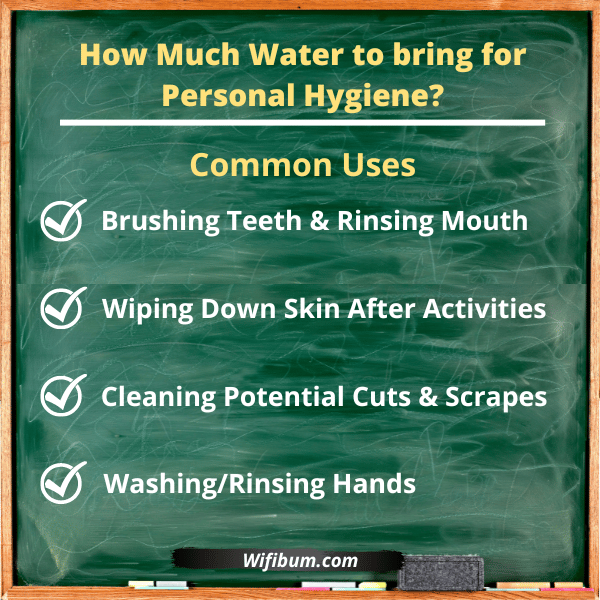
This includes brushing your teeth, washing any scrapes or cuts, and potentially wiping down your skin after a long day of hiking or other activities.
What about camping showers? Most people I know that like to camp, but also like to shower a) won’t go on a trip where there are no showers, b) will drive up to 30 minutes to a gym or other place they can shower.
For the rest of us, there is wiping down with a cloth and showering when we get back home, so this number is excluding water for showers.
Rule of Thumb: 0.5 liters for Hygiene
3. How Much Water to Bring for Cooking While Camping?
You will need roughly 0.75 to 1.0 liters of water per person per day for cooking.
This category is really hard to generalize, but if you know what you plan on eating, it can be adjusted.
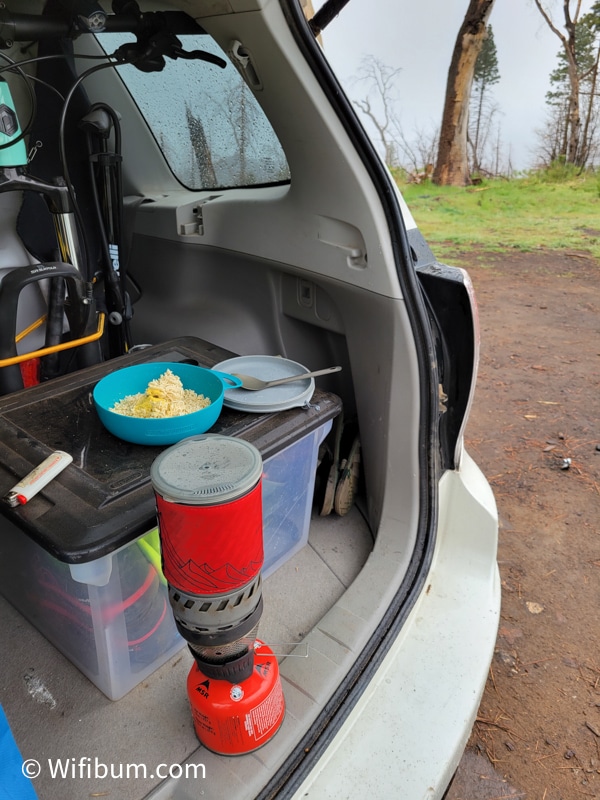
I know some people will simply bring those pre-made meals or a pack of ramen where you simply add boiling water.
Those meals and ramen need roughly 0.4 to 0.5 liters on average.
Oatmeal for breakfast might be 0.25 liters.
Coffee or tea might be 0.25 liters or ~8oz of water.
I also use a little water to rinse any dishes so food doesn’t get stuck on them.
If you’re enjoying some pudgy pies, hot dogs, brats, or other camping delicacies, you might need less water for cooking.
If you are cooking for a family or larger group, you might be bringing some sort of wash tub. Many have a capacity of 4 liters plus (1 gallon +) that you’d want to tack onto your calculation.
Rule of Thumb: 0.75-1.00 liters
4. How Much Water to Bring when ‘Leading’ a Camping Trip
I put leading in quotes because many casual camping trips are planned with input from many or all participants and there isn’t always someone that would consider themselves the leader of the trip.
So, if you are an informal leader of the trip OR if you consider yourself more experienced than others in your group, you need to think about water for other people.
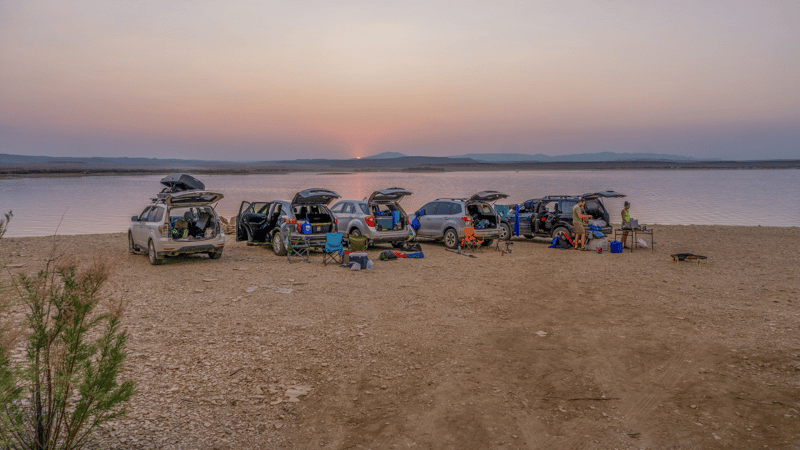
On nearly every trip I’m on with more than 8 people, there is someone that runs low on water. It’s also one of those issues that become almost exponential as you add more people to the trip.
In my experience, trips with more than 8 people do not include extreme activities and allow for more people to join on the trip with less experience. For those trips where “friends of friends” are there – make sure to have some communication about bringing some extra water as most people will underestimate if they are new to camping.
Rule of Thumb: If the group size exceeds 5, add 1 liter of water per person that exceeds 5. If you are camping with 9 people and are one of the more experienced folks, bring an extra 4 liters, or about an extra gallon of water, you are able to share if someone needs it. Communication upfront can help adjust this number as well.
Okay, so we have a rough estimate of our base case water needs with extra water for cooking and hygiene, but what if you’re more active than normal and it’s a hot summer trip? How do you adjust?
The 4 Primary Factors that Influence How Much Water You Will Need to Bring on a Camping Trip
The majority of the water we need to bring camping will be allocated to drinking water. Above, we learned that there is some research suggesting drinking 2.4 to 3.0 liters of fluids per person, per day.
Those numbers might jive with you on a random Tuesday, but what about a weekend full of fun hikes, a few beers around a campfire, and some summer sun in the mountains?
We are constantly losing water through breathing, perspiration, ruination, and other bodily functions.
Typically, camping trips will increase these things and result in a required increase in fluid intake.
Here are the 4 things to consider:
1. Activity Level Drives Your Water Needs
The American College of Sports Medicine recommends adding 0.35 liters or 12 ounces of water to your daily intake for every 30 minutes that you plan to work out [source].
REI suggests 0.5 liters of water per hour of moderate activity in moderate temperatures.
I assume the American College of Sports Medicine might be more focused on higher-intensity workouts than hiking, so I’m going to say 0.5 liters is a decent number.
Personally, I find myself drinking less than this number in moderate terrain and temperatures, but more on very long day hikes in warmer temperatures.
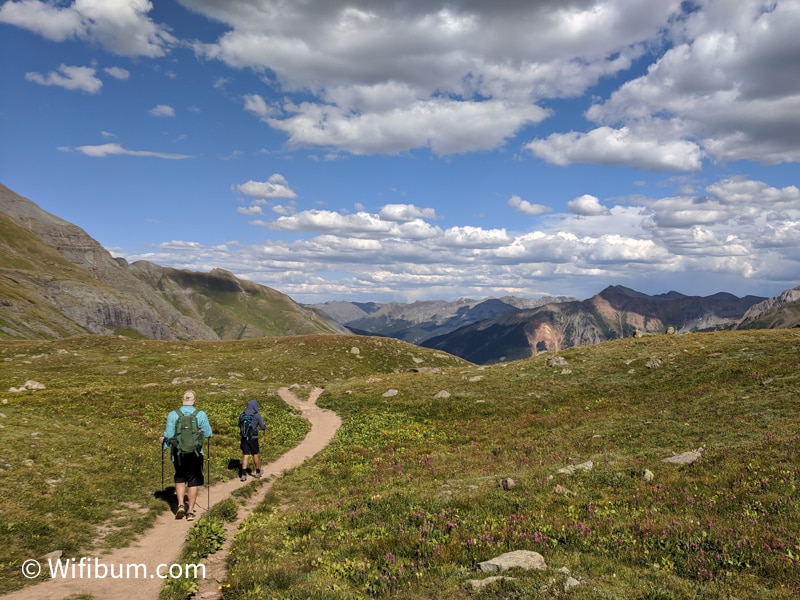
I like to think of my hiking pace as around 2.0 mph for varied terrain that includes time for breaks. If it’s flat terrain, it’s closer to 2.5 to 3.0mph.
So, if you’re doing an 8-mile hike, that’s about 3 to 4 hours of activity. You could add about 1.5 liters to your expected water needs for the day (this isn’t saying to bring that amount of water on the hike, that’s another group of variables. This is about adding it to your total water needs for the trip).
Rule of thumb: 0.5 liters per hour of moderate activity.
2. Weather: Temperature & Humidity
This can be as simple as “if it’s hot and humid, add more water to your camping trip.” How much more? It’s impossible to know, but here are some ideas.
If you can avoid activities during the hottest part of the day in the summer, you won’t need to worry AS much as if you are hiking all day in Moab and trying to hop from shade to shade patch.
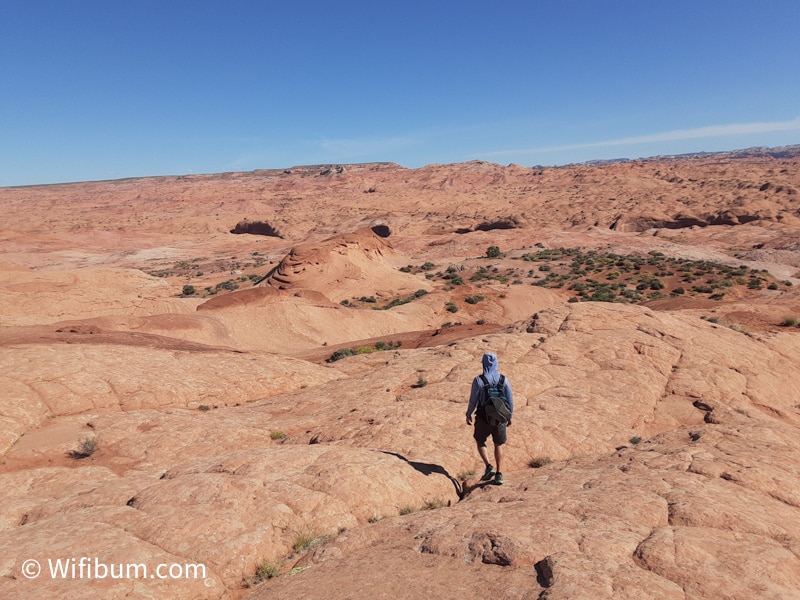
I’d think of it as temperature and humidity on their own individual scales and “combine them” into “mild, moderate, high.”
Mild should be the baseline of what your body is used to dealing with.
Moderate should be comfortable most of the time, maybe not during peak sun.
Severe is when you’re avoiding the sun and activities by like 10am and avoid the afternoons.
If both are Mild, you probably don’t need any adjustments. When one or both are moderate, consider bringing additional water on the trip. If both are severe, bring more water and also think about how to avoid the more severe times of the day.
Rule of Thumb: I would probably add 0.25 to 0.5 liters of water per hour of activity in temperatures where you’re sweating even with very little activity. The more you get outdoors, the more you can dial this in, but definitely error on the side of bringing a lot more water than needed if it’s the middle of summer.
3. Elevation
For some, it is common knowledge to drink more water at higher elevations. As a midwestern-born, I heard about this when I first visited Colorado. “Make sure to drink more water and be careful, you’ll get drunk faster” were the two bits of advice I got.
But why?
For one, the air you breathe tends to be dryer at a higher elevation. Second, it is common to have increased urinary output at elevation.
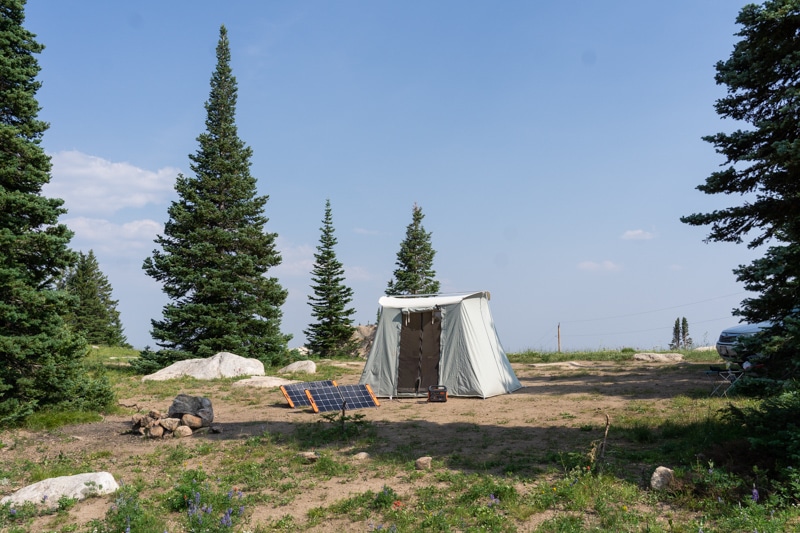
“At elevation” means different things for different folks, but in general, if you’re camping above 8,000ft of elevation, you may need to increase your water intake each day.
In addition, if you are coming from sea level and going to 5 or 6,000ft of elevation, you may also need to increase your water.
Source: A variety of mountaineering websites [here’s one]. And personal experience.
Rule of Thumb: Bring 0.5 or 1.0 liter more if you’re at a moderately higher altitude.
4. Alcohol Use
Most people are aware that alcohol is a diuretic, which means it promotes water loss through urine.
What you might not be aware of is HOW MUCH water your body can lose by drinking alcohol.
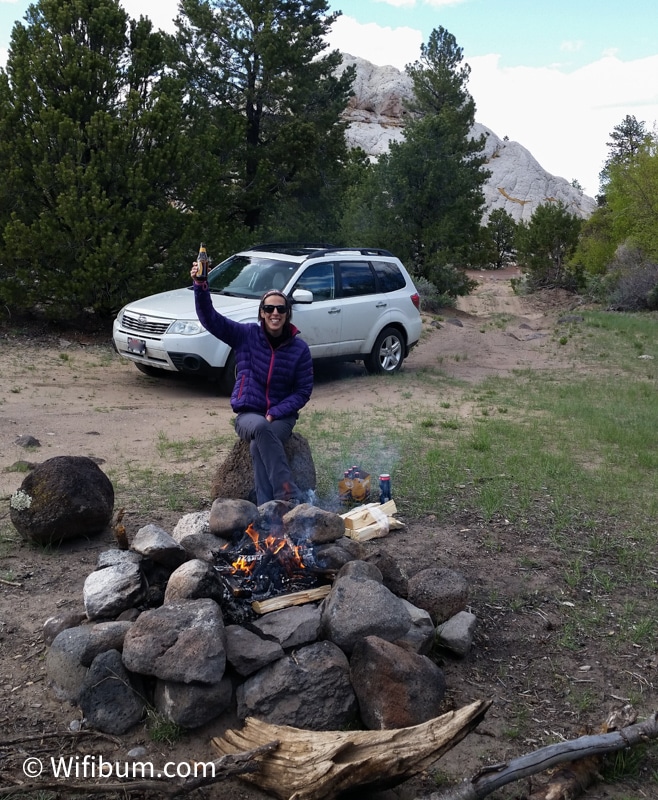
According to WebMD, for every alcoholic drink you have, your body can expel up to four times as much liquid.
However, reading Reddit (official, I know), it seems to vary dramatically on many factors. It might also have to do with how high your blood alcohol content gets for how long and who knows what else.
At the end of the day, if you drink alcohol, you will be dehydrating yourself more than if you did not drink alcohol. And the more alcohol you consume, the more you will be dehydrating yourself.
Rule of Thumb: If you’re drinking alcohol, you’ll need more water.
Camping Water Calculator
The amount of water you bring camping will vary depending on several variables. The below calculation is one that works for me. The best way to find your own method is to generally overestimate your needs on your trips and be cognizant of how much you use.

For context, I’m 6 feet tall and ~190lbs. Admittedly, I also sweat an obnoxious amount as soon as it hits like 70F, so keep that in mind.
It would look something like this each day:
- Drinking water – 3 liters
- Add: 2.0 liters for being active and typically being warm weather
- Cooking water – 0.5 liters
- Hygiene water: 0.5 liters
- Extra/Reserves 1.0 liters
- Total: 7 liters or 1.85 gallons per day.
And yes, I basically wrote a novel to come up with ~2 gallons per person, per day which is already known.
However, now you have an idea of how to calculate it on your own and how you might consume these 2 gallons.
Bringing Too Much Water Camping
While researching what others were saying about this topic, I came across this in a forum when someone asked how much water to bring:
“Whatever you think you need… double it.”
This is terrible advice, but it probably comes from their own experience similar to my own – most people UNDERESTIMATE their water consumption and bring too little.
However, my dear friend that is a casual camper once thought bringing 8 gallons of water for herself on a casual 2 day trip was the right amount. When I picked her up, I already had 2 others in my car and her gear simply didn’t fit in the car with the water.
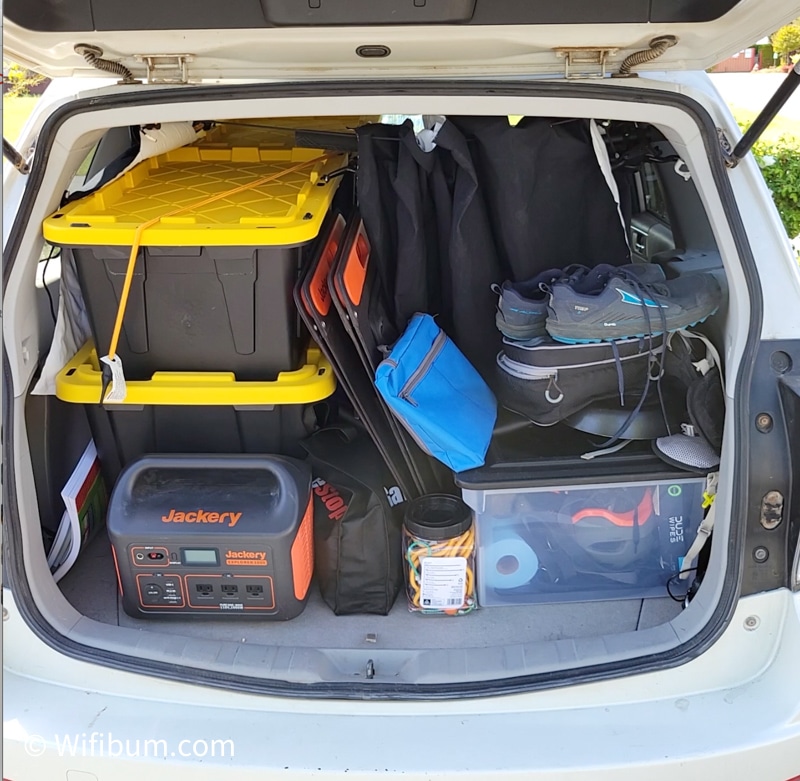
Be Carpooling Friendly
The main issue with bringing too much water is when you’re carpooling with friends.
Many times we try to get at least 4 people in a vehicle. If everyone is overestimating their water by 1 or 2 gallons, that adds up real quick!
Water weighs about 8.34lbs per gallon, bringing an extra 2-3 gallons in a large container can be a pain lugging around as well.
Buying the Right Gear
Getting your water usage dialed in also helps you in your future purchase decisions. Having a 2.5 or 5.0 gallon storage container is probably great for most people. However, getting a 7 gallon+ container when you primarily do weekend trips by yourself might be overkill.
Get outside, keep track of your water consumption, and dial it in over a few trips before making any significant purchases.
Below is a picture of 2x 5 gallon / ~20L containers. This is overkill for most people, but might be the right amount for extended trips to the desert or a weekend with a large family. Read about Scepter water can containers here. Or read about other water containers here.
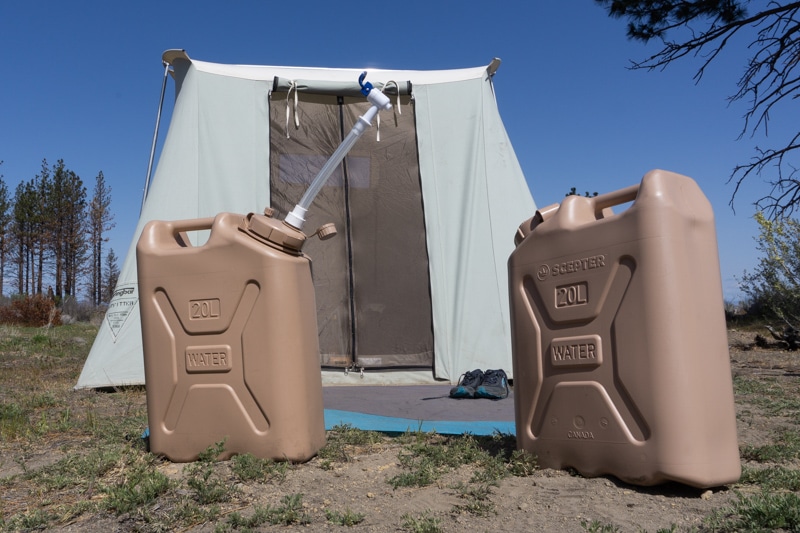
How to Reduce the Amount of Water You Need on a Camping Trip
This article was written from the point of view that you do not have access to purified drinking water on the trip.
Camping or Hiking Near Water
If you know you are camping near a water source OR if you are hiking in an area with reliable water sources, you can bring a backpacking water filter to filter additional water.
When possible, I try to carry less water on hikes and filter the water as I go. This could dramatically reduce the amount of water you actually need to bring.
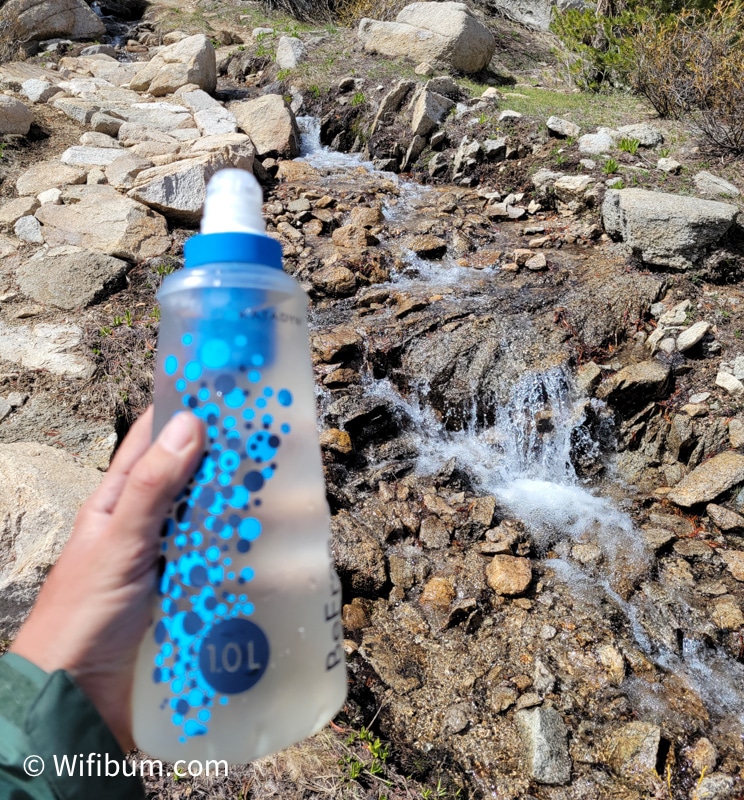
If you’re camping near water, you can also filter that water to use for your daily needs.
Plan at Stopping at Refill Stations
If you’re on camping roadtrip, you can easily refill at many gas stations and grocery stores.
You just need reusable containers such as these:
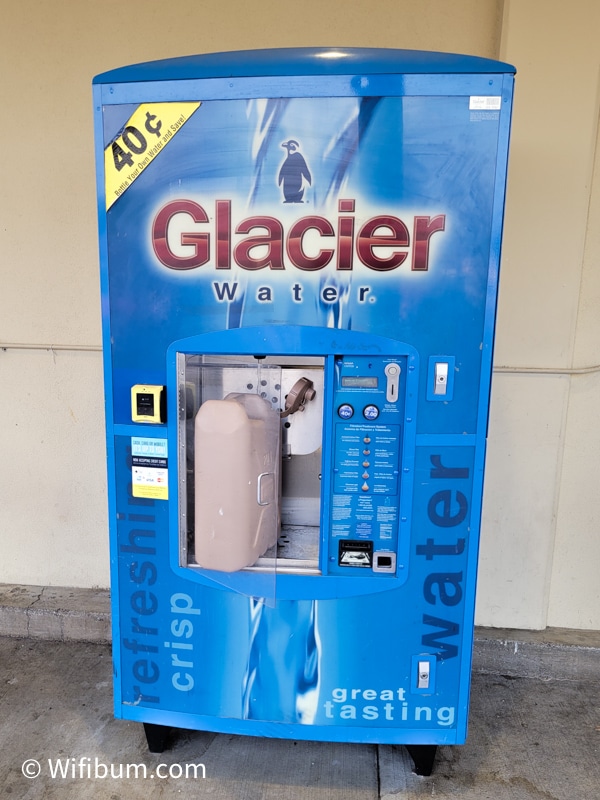
Other Water Resources
I have written about the Scepter Water Can and why it’s my favorite water container.
I also compare it to other containers here: Best Water Containers for Camping.
Thanks for checking out Wifibum!
Frequently Asked Questions
Q: How much water do I need for 7 days camping?
As a general rule should bring about 2 gallons per person per day. However, it will depend on how you use the water, whether you’re showering with it, and whether you’re relaxing or having an active camping trip.
Q: How much water do I need for a 2 day camping trip?
As a general rule should bring about 2 gallons per person per day. Some will need less if it’s a relaxing trip and you won’t need additional water for hikes, backcountry showers, etc.

